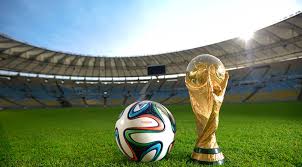Explore the youngest footballers to ever play in the FIFA World Cup. Discover how league development shaped their early rise to the global stage.
Youngest Players to Ever Play at a World Cup
The FIFA World Cup has always been the grandest stage in football. While it often features seasoned veterans and global superstars, some of the tournament’s most memorable stories come from teenagers stepping onto the pitch with the world watching.
Over the decades, a select group of young players have made history by debuting at the World Cup while still in their teens. These rising stars often come from strong MQM Bet league backgrounds that nurture their talent from a young age. This article explores the youngest footballers to ever play in the World Cup, their journeys, and how their respective leagues shaped their futures.
1. Norman Whiteside (Northern Ireland) – 17 years, 41 days
World Cup: Spain 1982
League Club at the Time: Manchester United
Norman Whiteside remains the youngest player ever to appear in a World Cup. He broke Pelé’s longstanding record by debuting for Northern Ireland against Yugoslavia in 1982. Whiteside’s mature performances shocked the world and paved the way for a successful club career in the English league system, particularly with Manchester United.
2. Samuel Eto’o (Cameroon) – 17 years, 98 days
World Cup: France 1998
League Club at the Time: Real Madrid
Before becoming a world-renowned striker, Samuel Eto’o made his World Cup debut as a teenager for Cameroon. Although he saw limited action in 1998, the experience proved invaluable. His development continued in Spain’s La Liga, where he became a legend at FC Barcelona and an icon across African football.
3. Femi Opabunmi (Nigeria) – 17 years, 100 days
World Cup: Korea/Japan 2002
League Club at the Time: Shooting Stars (Nigeria)
Femi Opabunmi was a surprise inclusion in Nigeria’s 2002 World Cup squad. His explosive pace and confidence at such a young age reflected his potential, but unfortunately, his career was cut short by a severe eye condition. Nevertheless, his moment in the World Cup spotlight remains iconic for Nigerian fans and shows how important local league structures are in developing raw talent.
4. Pelé (Brazil) – 17 years, 234 days
World Cup: Sweden 1958
League Club at the Time: Santos FC
Pelé isn’t just one of the youngest players in World Cup history—he’s also one of its most legendary. At just 17, he scored six goals in the 1958 tournament, including a hat-trick in the semifinal and a brace in the final against Sweden. Pelé’s meteoric rise from Brazil’s Campeonato Paulista to global stardom remains the gold standard for young talent breaking into elite football.
5. Bartholomew Ogbeche (Nigeria) – 17 years, 249 days
World Cup: Korea/Japan 2002
League Club at the Time: Paris Saint-Germain (France)
Another young Nigerian making headlines in 2002, Ogbeche played in multiple matches for Nigeria. While his World Cup impact was limited, his experience on the world stage at a young age helped him carve out a steady career across multiple league systems, including Ligue 1 and La Liga.
6. Salomon Olembé (Cameroon) – 17 years, 184 days
World Cup: France 1998
League Club at the Time: Nantes (France)
Olembé showed flair and composure in France 1998, showcasing the kind of technical skills typical of French league products. Though his international career had ups and downs, his early debut laid the foundation for a professional journey across Europe.
7. Rigobert Song (Cameroon) – 17 years, 358 days
World Cup: USA 1994
League Club at the Time: Metz (France)
Before becoming Cameroon’s most-capped player, Rigobert Song was a teenager debuting at the World Cup in 1994. He even got sent off during the tournament, making him the youngest player to receive a red card in a World Cup. His resilience and leadership were later honed through a long career in elite European leagues.
8. Martin Ødegaard (Norway) – Yet to debut at a World Cup
While Ødegaard has not yet appeared at a World Cup, his early rise through Norway’s league system and his Real Madrid debut at 16 show how modern footballers are being prepared at younger ages for the highest levels. Should Norway qualify in 2026, he’ll enter as a seasoned star, but his development mirrors many players on this list.
9. Youssoufa Moukoko (Germany) – 18 years, 3 days
World Cup: Qatar 2022
League Club at the Time: Borussia Dortmund (Germany)
Moukoko became Germany’s youngest ever World Cup player in 2022. Having broken multiple youth records in the Bundesliga, his rise was no surprise. The German league’s emphasis on youth development—particularly at clubs like Dortmund—is key to creating players ready for international competition.
10. Julian Green (USA) – 19 years, 25 days
World Cup: Brazil 2014
League Club at the Time: Bayern Munich (Germany)
Julian Green scored a goal against Belgium in the Round of 16, making him one of the youngest goal scorers in World Cup history. Though his club career didn’t explode as expected, his inclusion demonstrated the growing quality of dual-national players developed across league systems in both Europe and North America.
League Development and Global Impact
A common theme among these young players is strong support from well-structured league systems. Whether it’s Europe’s elite academies, African grassroots programs, or emerging North American setups, these environments play a vital role in preparing players for the pressure of the World Cup.
The trend toward trusting young players reflects how modern leagues embrace tactical intelligence, physical preparation, and emotional maturity at earlier stages than ever before. This shift means we’re likely to see even younger prodigies in future tournaments.
Future Young Stars to Watch for 2026
Some potential teenage sensations for the 2026 World Cup include:
- Endrick (Brazil) – Already signed with Real Madrid, he could debut before turning 19.
- Lamine Yamal (Spain) – Barcelona’s teen sensation may become a global star in 2026.
- Arda Güler (Turkey) – Real Madrid’s Turkish prodigy has already impressed in La Liga.
These players, nurtured by top league academies, are on track to become the next record-breakers.
Conclusion
The World Cup isn’t just for legends—it’s also where legends are born. From Pelé to Moukoko, young players have proven they belong on the biggest stage in football. Behind every young star is a league system that nurtured their growth, honed their skills, and gave them the confidence to face the world.
Support your favorite young stars as they rise through the ranks of their domestic league and prepare for the global spotlight. Whether it’s a teenager from your local team or a prodigy from abroad, follow their journey and support the league system that helps shape football’s future.













